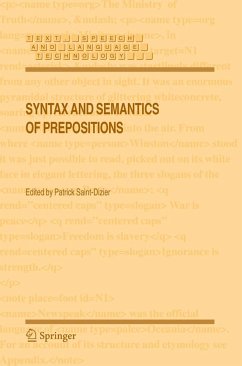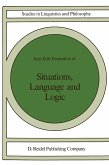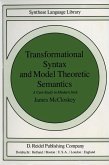A great deal of attention has been devoted in the past ten years in the lingu- tic and computational linguistics communities to the syntax and the semantics of nouns, verbs and also, but to a lesser extent, to adjectives. Related p- nomena such as quanti?cation or tense and aspect have motivated a number of in-depth studies and projects. In contrast, prepositions have received less attention. The reasons are quite clear: prepositions are highly polysemic, p- sibly more so than adjectives, and linguistic realizations are extremely dif?cult to predict, not to mention the dif?culty of identifying cross-linguistic regula- ties. Furthermore, a number of languages do not use prepositions or postpo- tions (or make a limited use of them) and prefer other linguistic forms such as morphological marks, e. g. case marks. Let us mention, however, projects devoted to prepositions expressing space, time and movement in arti?cial intelligence and in natural language processing, and also the development of formalisms and heuristics to handle prepositional phrase attachment ambiguities. Prepositions are also present in subcategorization frames of predicative lexical items, but often in an informal and coarse-grained way. Let us also mention the large number of studies in psycholinguistics and in ethnolinguistics around speci?c preposition senses. Finally, prepositions seem to reach a very deep level in the cognitive-semantic structure of the brain: cognitive grammar developers often use prepositions in their metalanguage, in order to express very primitive notions.








